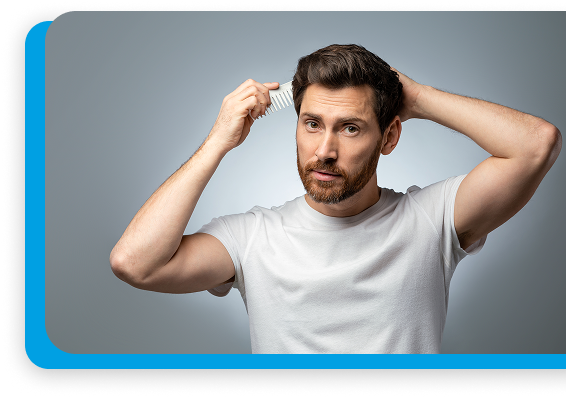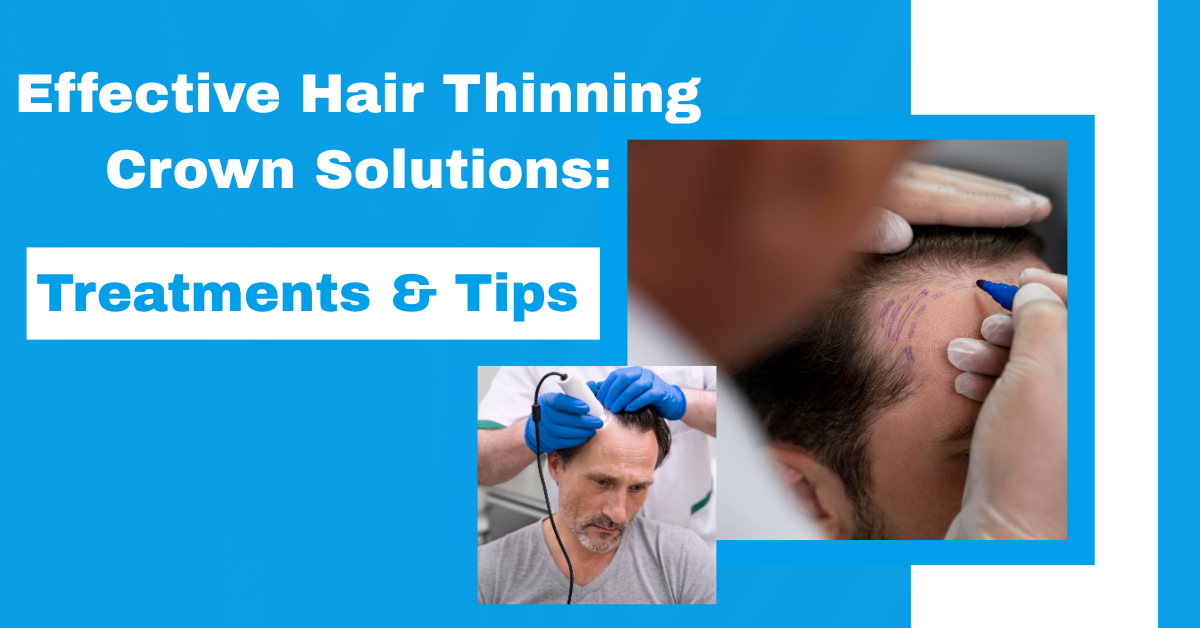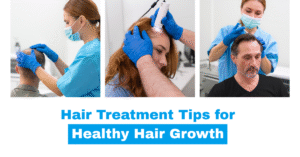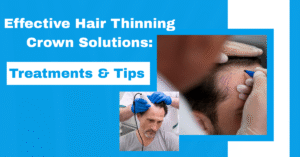Effective Solutions for Thinning Hair at Crown
Thinning hair at the crown is one of the most common and frustrating signs of hair loss—especially for men and women noticing a widening part or more visible scalp. This condition can result from genetics, hormonal shifts, or stress, and addressing it early makes a big difference. Treatments range from natural options like scalp massages and essential oils to advanced clinical therapies, including platelet-rich plasma (PRP), DHI, or FUE hair transplantations. When the hair follicle at the crown becomes inactive, methods like Modified Hair Implantation (MHI) or Direct Hair Implantation (DHI) provide a long-term solution to hair loss by restoring new hair growth in the recipient area. A customized approach tailored by a hair transplant surgeon can help you not just regain your crown hair—but your confidence too.
Experiencing hair thinning at the crown is a widespread issue that affects many individuals, often becoming more noticeable with time.
It affects both men and women and often causes emotional distress. The crown area, due to its circular structure, is especially vulnerable. Common causes include genetic predisposition, hormonal imbalances, and stress. Understanding the root cause is essential when choosing the best treatment for hair loss.
Taking action early is key. The sooner you begin addressing the thinning, the more effective your hair restoration journey can be. The market offers various options—from medications and hair transplant procedures to holistic remedies and lifestyle changes.
Speaking to transplant surgeons or trichologists can help design the right path for your unique case.
Understanding Hair Thinning at the Crown
When the type of hair loss is concentrated at the crown, it often means hair strands are miniaturizing or falling out due to inactive hair follicles.
This makes the area noticeably sparse. In some cases, the thinning progresses slowly, making it harder to detect in early stages.
Watch out for signs such as:
- Visible scalp in the crown
- Thinner hair volume or ponytails
- Finding more hair strands on your pillow or in the shower may be one of the first visible signs of ongoing hair shedding.
Identifying symptoms early increases the chance of effective intervention, especially if you’re considering types of hair transplant techniques like FUE or FUT.
Common Causes of Crown Hair Loss
Genetic Factors and Androgenetic Alopecia
Androgenetic alopecia, commonly known as male or female pattern baldness, is the most prevalent type of hair loss at the crown. It’s hereditary and affects both men and women. If you see bald spots or a widening part in your family members, you may experience the same.
Hormonal Changes and Imbalances
Changes in hormones—whether during menopause, pregnancy, or due to testosterone imbalances—can interrupt the normal hair growth cycle, leading to noticeable crown thinning. Addressing hormonal health is crucial in managing this type of hair loss.
Lifestyle and Environmental Contributors
External factors like stress, inadequate nutrition, insufficient sleep, and exposure to pollution are also known to contribute to hair loss. High cortisol levels affect the donor area and recipient area alike, reducing natural hair regrowth. Ensuring a nutrient-rich diet and stress management is vital.
How to Identify Hair Thinning at the Crown
Early signs include:
- Widening of your hair part
- Scalp visibility even after combing
- Less density during hairstyling
Track your hair transplant expectations and results using crown photos to observe changes. Many patients notice visible improvement when hair grafts are placed effectively during hair transplant surgeries.
Early Intervention: Why Timing Matters
Prompt action means more options. When transplanted hair is placed before complete miniaturization, hair transplant procedures are far more effective.
You can still explore follicular unit extraction FUE, follicular unit transplantation FUT, or MHI method for a natural result.
Medical Treatments for Crown Hair Loss
Here are scientifically proven solutions for hair loss at the crown:
- Minoxidil (topical)
- Finasteride (oral)
- PRP therapy
- Low-level laser therapy (LLLT)
Each option targets different stages of the hair growth cycle, from reactivating hair follicles to boosting new hair growth. Hair transplant surgeons may recommend combining these treatments for the best outcome.
Topical Treatments: Minoxidil and More
Minoxidil works directly on the donor site and recipient area, improving blood flow and stimulating hair regrowth. Daily application maintains results, and it works for both men and women.
Oral Medications: Finasteride and Alternatives
Finasteride inhibits the hormone responsible for androgenetic alopecia. Results are visible within a few months but require consistent use.
Platelet-Rich Plasma (PRP) Therapy
PRP uses your own blood to stimulate hair regrowth, making it a natural and non-surgical method to activate dormant follicles and boost scalp health.
It’s a natural and safe alternative to surgery, and often used as a supplementary treatment for hair loss.
Low-Level Laser Therapy (LLLT)
This therapy uses gentle laser light to awaken dormant hair follicles. It’s painless and suitable for long-term use, improving the results of other therapies or types of hair transplant.
Surgical Solutions: Hair Transplant Options
Hair transplant surgeries remain the gold standard for persistent crown thinning. The surgeon transfers healthy hair grafts from the donor area to the crown.
Types of hair transplant procedures include:
- FUE (Follicular Unit Extraction)
- FUT (Follicular Unit Transplantation)
- DHI (Direct Hair Implantation)
- MHI (Modified Hair Implantation)
FUE hair transplantations involve less downtime and no linear scars, making them ideal for those with busy lives.
Natural and At-Home Remedies
Complement medical treatments with safe home-based strategies:
- Scalp massages
- Rosemary and peppermint essential oils
- Herbal supplements like biotin
Always consult a specialist before adding these remedies to your regimen.
Scalp Massage and Essential Oils
Regular massages improve blood circulation and energize hair follicles. Oils like rosemary are known for supporting hair restoration.
Nutritional Support and Supplements
Nutrients like biotin, vitamin D, and zinc play a vital role in maintaining healthy hair follicles. A nutritionist or dermatologist can guide you on the right intake.
Lifestyle Changes to Prevent Further Thinning
Incorporate these habits:
- Sleep 7–8 hours daily
- Hydrate adequately
- Avoid excessive styling or chemical treatments
Stress reduction practices like yoga can prevent hormonal triggers that cause you to lose hair.
Hair Care Tips for Thinning Crowns
Handle your hair with care:
- Use a soft towel to dry
- Avoid tight hairstyles
- Protect your scalp from UV rays
Gentle hair practices maintain the health of both donor site and transplanted hair.
Cosmetic Solutions for Concealing Thinning Areas
If you need a quick fix:
- Hair fibers
- Tinted sprays
- Scalp concealer powders
These options don’t replace treatments but can enhance your hair transplant experience visually.
When to See a Specialist
If thinning continues or worsens, seek a hair transplant surgeon or dermatologist. They’ll analyze your type of hair loss and provide targeted care.
Emotional Impact and Support Resources
Coping with crown thinning isn’t just physical. It can hurt your confidence.
Support options:
- Online hair loss forums
- Mental health counseling
- Speaking to others with similar experiences
You’re not alone in your hair restoration journey.
Frequently Asked Questions About Crown Hair Loss
What causes crown thinning?
Mainly androgenetic alopecia, hormones, and lifestyle factors.
Can it be reversed?
Yes, with early and consistent treatment for hair loss, some new hair growth is possible.
What’s the best treatment?
It depends. Options include PRP, Minoxidil, FUE, or newer MHI techniques guided by a hair transplant surgeon.
Is a hair transplant permanent?
Yes, transplanted hair from a stable donor area is long-lasting.
Conclusion: Taking Action Against Hair Thinning at the Crown
Managing crown thinning requires a smart blend of clinical and natural strategies. From types of hair transplant techniques like FUE and MHI to supplements and lifestyle changes, many paths lead to success.
Stay consistent. Get professional help early. And remember—hair restoration is not just about looking good. It’s about reclaiming your self-image and emotional well-being.












